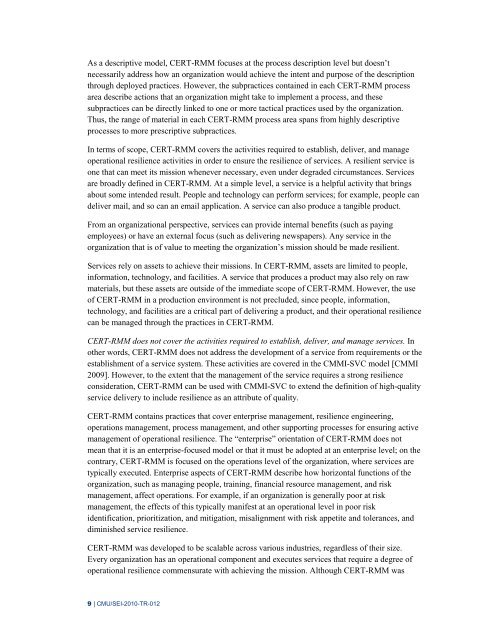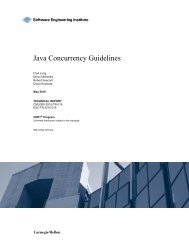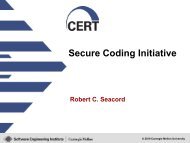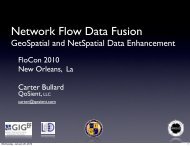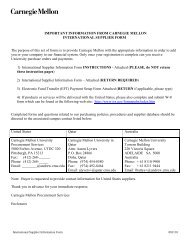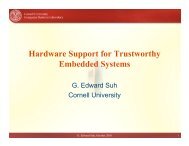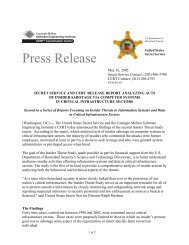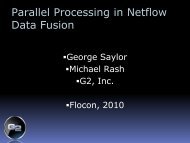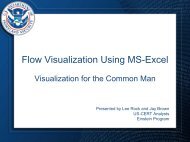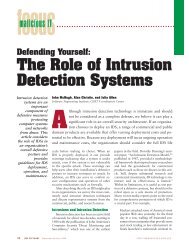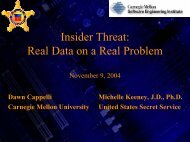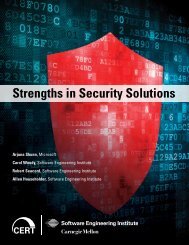CERT Resilience Management Model, Version 1.0
CERT Resilience Management Model, Version 1.0
CERT Resilience Management Model, Version 1.0
- No tags were found...
You also want an ePaper? Increase the reach of your titles
YUMPU automatically turns print PDFs into web optimized ePapers that Google loves.
As a descriptive model, <strong>CERT</strong>-RMM focuses at the process description level but doesn’tnecessarily address how an organization would achieve the intent and purpose of the descriptionthrough deployed practices. However, the subpractices contained in each <strong>CERT</strong>-RMM processarea describe actions that an organization might take to implement a process, and thesesubpractices can be directly linked to one or more tactical practices used by the organization.Thus, the range of material in each <strong>CERT</strong>-RMM process area spans from highly descriptiveprocesses to more prescriptive subpractices.In terms of scope, <strong>CERT</strong>-RMM covers the activities required to establish, deliver, and manageoperational resilience activities in order to ensure the resilience of services. A resilient service isone that can meet its mission whenever necessary, even under degraded circumstances. Servicesare broadly defined in <strong>CERT</strong>-RMM. At a simple level, a service is a helpful activity that bringsabout some intended result. People and technology can perform services; for example, people candeliver mail, and so can an email application. A service can also produce a tangible product.From an organizational perspective, services can provide internal benefits (such as payingemployees) or have an external focus (such as delivering newspapers). Any service in theorganization that is of value to meeting the organization’s mission should be made resilient.Services rely on assets to achieve their missions. In <strong>CERT</strong>-RMM, assets are limited to people,information, technology, and facilities. A service that produces a product may also rely on rawmaterials, but these assets are outside of the immediate scope of <strong>CERT</strong>-RMM. However, the useof <strong>CERT</strong>-RMM in a production environment is not precluded, since people, information,technology, and facilities are a critical part of delivering a product, and their operational resiliencecan be managed through the practices in <strong>CERT</strong>-RMM.<strong>CERT</strong>-RMM does not cover the activities required to establish, deliver, and manage services. Inother words, <strong>CERT</strong>-RMM does not address the development of a service from requirements or theestablishment of a service system. These activities are covered in the CMMI-SVC model [CMMI2009]. However, to the extent that the management of the service requires a strong resilienceconsideration, <strong>CERT</strong>-RMM can be used with CMMI-SVC to extend the definition of high-qualityservice delivery to include resilience as an attribute of quality.<strong>CERT</strong>-RMM contains practices that cover enterprise management, resilience engineering,operations management, process management, and other supporting processes for ensuring activemanagement of operational resilience. The “enterprise” orientation of <strong>CERT</strong>-RMM does notmean that it is an enterprise-focused model or that it must be adopted at an enterprise level; on thecontrary, <strong>CERT</strong>-RMM is focused on the operations level of the organization, where services aretypically executed. Enterprise aspects of <strong>CERT</strong>-RMM describe how horizontal functions of theorganization, such as managing people, training, financial resource management, and riskmanagement, affect operations. For example, if an organization is generally poor at riskmanagement, the effects of this typically manifest at an operational level in poor riskidentification, prioritization, and mitigation, misalignment with risk appetite and tolerances, anddiminished service resilience.<strong>CERT</strong>-RMM was developed to be scalable across various industries, regardless of their size.Every organization has an operational component and executes services that require a degree ofoperational resilience commensurate with achieving the mission. Although <strong>CERT</strong>-RMM was9 | CMU/SEI-2010-TR-012


